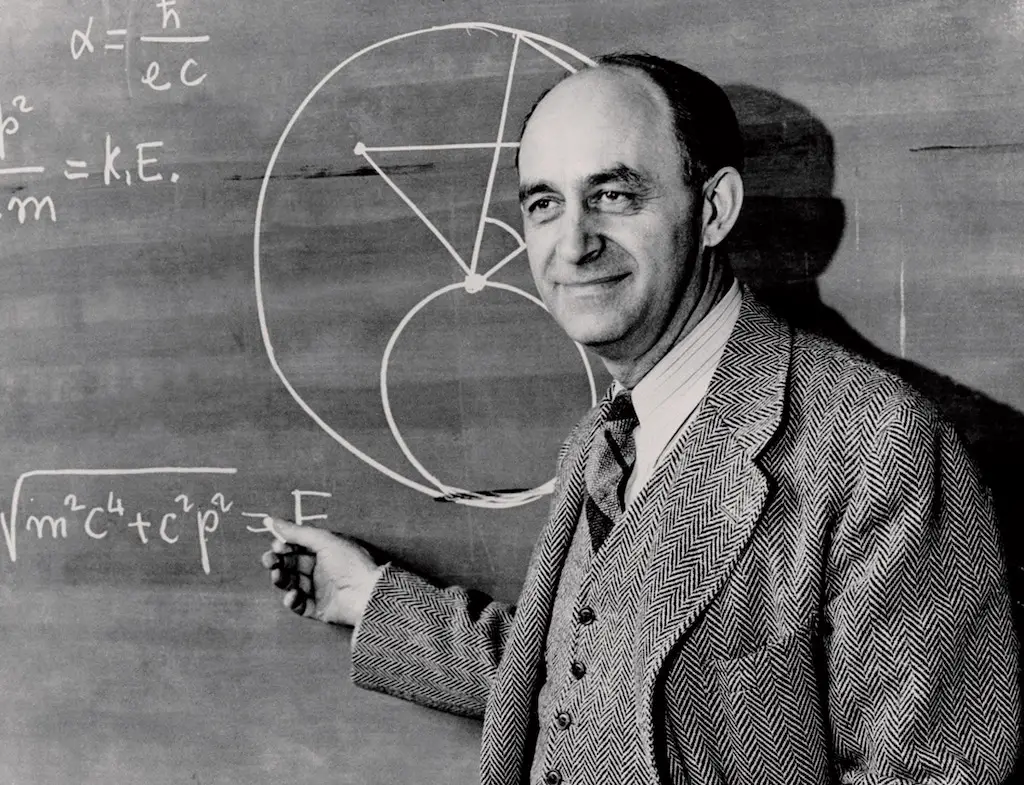Enrico Fermi was born in Rome on 29 September 1901. The world knows his best for his contributions to nuclear physics and the development of quantum theory.

Winner of 1938 Nobel Peace Prize
Fermi attended the University of Pisa, graduating in 1922. He became a lecturer at the University of Florence for two years and then professor of theoretical physics in Rome. In 1934, while at the University of Rome, Fermi began experiments where he bombarded a variety of elements with neutrons. He discovered that slow-moving neutrons were especially effective in producing radioactive atoms. Not realizing he split the atom, Fermi announced what he thought to be elements beyond uranium. Fermi won the 1938 Nobel Prize for physics for his work on nuclear processes. Also in 1938 two German physicists, Lise Meitner and Otto Frisch performed a similar experiment where they split a uranium atom. They named the process of splitting atoms “nuclear fission.”
Arrival in the United States
In 1938 Fermi left Italy. The “official” reason was that his wife was of Hebrew origin and he feared for her safety. The “unofficial” story is that Fermi required funding to continue his research in nuclear physics. Being a poor country at the time, Italy did not have the resources to continue his research. He was one of a large group of intellectuals who left other European countries with the rise of National Socialism (the Nazi Party) in Germany and Fascism in Italy. Fermi settled in the United States in 1939 and became a professor of physics at Columbia University in New York City.
There are two possible outcomes: If the result confirms the hypothesis, then you’ve made a measurement. If the result is contrary to the hypothesis, then you’ve made a discovery.
Nuclear Chain Reaction
Fermi continued to conduct nuclear fission experiments at Columbia University. In 1940, Fermi’s team confirmed that absorption of a neutron by a uranium nucleus can cause the nucleus to split into two nearly equal parts, releasing several neutrons and enormous amounts of energy. The potential for a self-sustaining nuclear chain reaction had become a strong possibility.
Leader of Manhattan Project

Fermi (on the first row left ) and his team which worked during the Second World War in achieving the first self-sustained chain reaction in nuclear energy on December 2, 1942, at Stagg Field, University of Chicago.
Fermi was placed in charge of the Manhattan Project at the University of Chicago in 1942. His team developed the first atomic pile and produced the first nuclear chain reaction. The project moved to New Mexico in 1944, and on 16 July 1945, the first atomic bomb detonated at Alamogordo Air Base.
Enrico Fermi Returns to Italy
After the war, Fermi continued his pioneering research on high energy particles. In 1953, Fermi visited Italy for the final time. On November 28, 1954, he died of cancer at the University of Chicago. Fermi is remembered as the “father of the atomic bomb.”
Resources
“Enrico Fermi.” Atomic Heritage Foundation. September 29, 1901. Last accessed July 27, 2019. https://www.atomicheritage.org/profile/enrico-fermi.
“Enrico Fermi.” Atomic Heritage Foundation. September 29, 1901. Last accessed July 27, 2019. https://www.atomicheritage.org/profile/enrico-fermi.
Article Courtesy: Robin Chew via Lucid Cafe